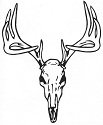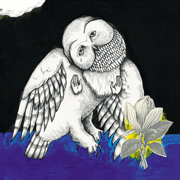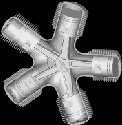|
Cage Kicker posted:I've always liked spotting different kinds of animals and trying to identify them, but I had no idea birding is so well-developed as a hobby! I'm lucky to live in an area within a stone's throw of the ocean and some fairly deep woods, I'm definitely going to be keeping up on this thread! Now's a great time to start! Lots of fall migrants heading south for the winter right now! Especially shorebirds, which you might discover (and other posters have mentioned) are quite a challenge even for experienced birders. The only group of birds that are more challenging for me personally than shorebirds is the gulls...I'm so poor with my gull ID that I pretty much just ignore them  BeastOfExmoor posted:If you want to study up on shorebirds, this book is really excellent. I linked to the CamelCamelCamel link because it's currently pretty expensive on Amazon, but sometimes drops down really low. Worth setting an alert for. The best part is that almost all the species photographed have several photos that contain multiple species next to each other. It really helps to compare them next to each other. There are a lot of bird photos on the internet that are misidentified. This is why having a book is so good. You can google "Western Sandpiper" and google "Semipalmated Sandpiper" and half of the pictures will be the exact same. If you get pictures from Cornell's ornithology website or from other trusted sources that's reliable, but keep in mind that people mis-label their bird photos all the time online. It can really confuse you! A book will always be accurate and true. Here are some good websites: http://www.allaboutbirds.org (Cornell's website) http://www.whatbird.com (a little more beginner-oriented, and has great tools for ID help) http://bna.birds.cornell.edu/bna/ This is Cornell's website that you can only access through a university or research institution or via paid subscription - if you have access to this site it is a GOLDMINE. It has more information on a given bird species than you will find anywhere, on the web or in books. Get on your university's internet if you are able and see if your school bought a subscription! You can access a few species accounts for free before it makes you sign up. Wikipedia is also fairly reliable, but it doesn't have a ton of info for most species. razz fucked around with this message at 17:54 on Aug 21, 2013 |
|
|
|

|
| # ? Apr 24, 2024 16:06 |
|
Do you get any money for being the first person to see the rare bird? Sponsorships or stuff like that or awards?
|
|
|
|
Wayne Gretzky posted:Do you get any money for being the first person to see the rare bird? Sponsorships or stuff like that or awards? I've never heard of anything like that. Your main reward is bragging rights. I've already had a couple people congratulate me on the Olive-sided Flycatcher, and people I haven't ever met know about my breeding Common Poorwill record. Honestly though I don't even care about bragging rights, I just like finding things  Besides, where would that money come from?
|
|
|
|
There are just a handful of real competitive birding events (like the World Series of Birding) where there might be sponsorships. It's much more common to have charity events, where teams get pledges for the number of species they see, and the money goes towards some conservation organizations. It's definitely fun to find something rare, especially during some organized count like the Christmas Bird Count. Most CBCs will have a countdown dinner at the end of the day, and some of them start by asking whether people have seen the common birds, and save the more and more rare for the end to build anticipation (rather than going in taxonomic order which is how other people do it). It's super sweet if you get one that's not even on their list because it's never been seen on the count before. One of the counts I do also gives a "best bird" prize, but I don't think it's actually a prize, just bragging rights. There are birders who lead tours or can be hired as guides by out of town birders. I suppose they might list in their qualifications if they have a lot of county/state first sightings, or if they have one of the biggest lists for the state.
|
|
|
|
razz posted:I've never heard of anything like that. Maybe all of the bird people pay money into a pot, or else maybe a binocular company wants to use the bird man in an advertisement and have his picture in the store... that's what I was thinking any way. When you see the bird, does it matter what they are doing? Is it for example extra good to see an owl eating, or two different birds loving each other? Like in hockey cards which I collect there's the regular cards and the "special versions" of the same card that are even more rare and special.
|
|
|
|
Wayne Gretzky posted:
Sort of, and it depends on the bird. Some birds are really spectacular at foraging (seeing a peregrine falcon or brown pelican or something dive on their prey is pretty bad rear end). Seeing a sage-grouse wandering around foraging would not be as exciting, but seeing a male inflate himself and display on the lek is pretty special, and from a personal perspecitive would probably be the "special version" that you'd want in your collection. Winter wrens are drab little birds but have one of the most spectacular songs, so that would count for a lot. Some observations of breeding behavior, such as building a nest, feeding young, tending very recent fledglings, are important scientific data that can be used to define the locations and habitats the birds use for breeding. EBird can take some of this, but it's mostly used in more professionally organized Breeding Bird Surveys, as well as locally produced Breeding Bird Atlases. Some people keep lists of birds they've seen loving or birds that have pooped on them, but this is only for their own tongue-in-cheek fun.
|
|
|
|
Yea, definitely not much money in birding, which is kind of refreshing to be honest. It's nice because even if you're crazy about it it's not that expensive in comparison to other hobbies. Top of the line binoculars and spotting scope will run you $2000 a piece, but you can get models that are 95% as good for half that, plus maybe another $300 for a tripod for your scope. The real money is spent on travel and guides. It's really common for the hardcore birders to travel to some very exotic locations. I don't know that many birders really, but I know folks who have been to Cuba, Ecuador, and Costa Rica in the last year. When you're completely out of your element you usually hire a local guide. When I was on a cruise with my wife earlier this year I hired a local guide for $300 for a day. Expensive, but totally worth it. Week+ long trips can cost thousands of dollars. edit: Wayne Gretzky posted:Maybe all of the bird people pay money into a pot, or else maybe a binocular company wants to use the bird man in an advertisement and have his picture in the store... that's what I was thinking any way. There's very few bird "celebrities" that ever would have the clout to endorse a product. I can probably count the number of "big names" in birding on one hand and essentially all of them are known for the books. I've heard that there's a few folks that get binoculars tossed their way in the hope that it will give them free publicity, but that's rare. As BetterLekNextTime stated, experiences are great, but there's no "score" to them. Seeing a bird where it's unusual, in great numbers, or doing something special are all cool experiences. The closest thing to special versions would be an unusual subspecies. Most bird species have subspecies that usually correspond to a geographical range. If I found a Eurasian Whimbrel in a group of American Whimbrels that would be very cool because I'd know that I was almost certainly looking at a bird that crossed the Bearing Sea to get here. BeastOfExmoor fucked around with this message at 21:40 on Aug 21, 2013 |
|
|
|
My dad is one of those people, spending his retirement years doing a lot of awesome trips. We have pretty good birds in the temperate US, but a trip to the tropics is pretty eye opening. There's a bit of a counter-movement to all the travel- some people find it ironic that the generally eco-minded birder is using up lots of fossil fuels just to see birds. Some people keep bike-walk only lists for their city or county.
|
|
|
|
BetterLekNextTime posted:seeing a male inflate himself and display on the lek is pretty special Can you please explain what this is?
|
|
|
|
Wayne Gretzky posted:Can you please explain what this is? 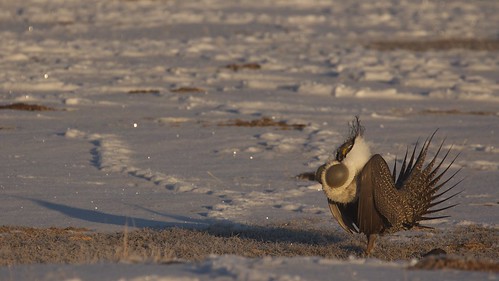 IMG_2175 - Version 2 on Flickr  IMG_7483 - Version 2 on Flickr  Snowy Sage-grouse on Flickr "Normal" posture 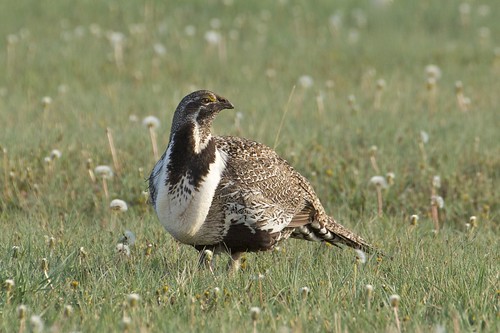 grouse&dandylions 080 on Flickr A few kinds of birds, including some grouse, move air from their respiratory system into their mouth and down into their esophagus to inflate it like a balloon. It makes a big resonating chamber- we don't know all the details about what it does to the sound but it should be helping the males pass louder low frequency sounds into the environment. These sounds bring females into the display grounds and females may also choose males to mate with based on aspects of the sound. There is also a visual component that goes along with it for the grouse, but not some other birds (pigeons, bitterns). Video here. (this the bird I'm studying now) BetterLekNextTime fucked around with this message at 22:20 on Aug 21, 2013 |
|
|
|
 I'd also recommend the Bird Chick Podcast.
|
|
|
|
BetterLekNextTime posted:
The birds grow boobs?
|
|
|
|
Sort of! Except remember it's dudes. It's basically just thin flexible skin that they can choose to show or not.
|
|
|
|
How come you like the birds' he-ooters so much? Just cool looking? I notice your "e-name" also references them.
|
|
|
|
Wayne Gretzky posted:How come you like the birds' he-ooters so much? Just cool looking? I notice your "e-name" also references them. It's just Sage Grouse that have the "boobs". I worked with Greater Prairie-Chickens for a while, and they have air sacs that they inflate like the Sage Grouse do, but they are on the side of their neck rather than in front like boobs  Grouse are a really intensively studied group of birds for a number of reasons - they have cool behaviors, most species are rapidly declining, and most are also game species (you can hunt them). A lot of research dollars go into grouse studies. Here's a video I took of the Greater Prairie-Chickens displaying on their lek. The males try to look and sound as awesome as possible so the females will mate with them. With this species (and many other bird species that have a lek mating system), one or two males out of the group will usually be the ones to mate with all of the females. https://www.youtube.com/watch?v=p0hRzuyPc7w The stuff in the background is part of the traps we set out to capture them. We put radio collars on them to track their movements and also put colored bands on their legs. razz fucked around with this message at 03:53 on Aug 22, 2013 |
|
|
|
Wayne Gretzky posted:How come you like the birds' he-ooters so much? Just cool looking? I notice your "e-name" also references them. I don't really want to derail too much from a birding thread, but, very briefly, I study behavioral evolution (among other things), basically how certain traits are beneficial. One subset of this is sexual selection, which relates to traits that help males compete for mates, and is responsible for a lot of the most eyecatching and ear-pleasing appearances and displays in animals. Grouse in general are good for a lot of reasons because their lek mating system makes studying female choice relatively clean (females are just picking sexy dudes) unlike most birds where they are choosing both sexy dudes and good dads, and also it's easy for pervy ornithologists (pornithologists?) to watch their mate choice happen since it's all out in the open all in one place. My PI/collaborator got interested in them to study the importance of social skills in sexual selection (among other things)- something that had been missing from most of the past 100+ years of study in this field. The he-ooters (we call them breasticles, but whatever) do weird things to the sound radiation patterns and we are studying how males beam their sound at the females during courtship, and one of the things we're trying to do is measure the relative importance of being loud versus just being good at aiming the loud part of their sound at the female. We also use robot birds, but that's a tale for another day.
|
|
|
|
Love this thread! Birding has really enriched my life- it makes any walk down the block all the more interesting to know about the songs you're hearing and the birds you're seeing. I've worked in wildlife rehabilitation for about three years (so I see many birds up close), but the past two years I got really into birding and have been going out birding on my own a lot. I live in Queens and have access to good birding spots like Jamaica Bay and Central Park (great during migration!). It's a really fun hobby and I find that in my area, more experienced birders are really kind and helpful to me as a younger amateur birder. I have also done the Christmas Bird Count two years in a row so far and I look forward to it so much each passing year! For anyone looking to learn more at home, Cornell Lab of Ornithology offers little webinars and online tutorials on bird identification: http://www.birds.cornell.edu/courses/home/. I haven't taken any of the courses but I think it's great they offer it.
|
|
|
|
Phasianids are awesome. They're a cautionary tale for what happens if sexual selection runs amok. On a somewhat related note, has anyone had any trouble with binoculars at airports? I've got a pair that I'd like to bring in to the States from abroad, and I'm not sure whether they'd be better off in hand luggage or in a suitcase - or in neither. I'm coming in from the Middle East so I always get randomly chosen for searching. Are binoculars suspicious?
|
|
|
|
I traveled all over with binoculars, both in checked baggage and as carry-on. No one ever mentioned it to me at security.
|
|
|
|
Tardigrade posted:Phasianids are awesome. They're a cautionary tale for what happens if sexual selection runs amok. Bring them carry-on whenever possible- it would suck to have them stolen out of your luggage or lost if your bag is lost. I have occasionally been searched with binoculars in my carry-on- at US airports it's almost always been when my bag has has a P&S camera + bag full of chargers/cables + portable HD + Bins+ ipod, so it's hard to say it was the bins fault. I've had bins cause a search internationally, but it could be they were just looking for an excuse. If I have room I usually bring an old beater or compact pair of bins in my luggage if I'm going on a long ecotour just in case I lose/break my main pair.
|
|
|
|
I've never had an issue with my binoculars in my carry-on for work. I'm typically traveling with a full DSLR setup including a 100-400mm lens and nobody bats an eye. I've heard the same from other birders.
|
|
|
|
If anyone is looking for a bird ID app, Peterson's is on sale now for $5 (normally $15). I've never used this one- has anyone else here given it a try? I have iBird and Sibley.
|
|
|
|
For those that live in Ohio, particularly around or in Cuyahoga or Lorain County up near Cleveland, you must check out Sandy Ridge Reservation in North Ridgeville. http://metroparks.cc/sandy_ridge_reservation.php It is a huge wetland nature preserve that attracts a ton of birds. I was talking with the park manager today and he was telling me about how in May he hosts a 'bird-off' for local charities. He said last year from their one observation mound he spotted 80 species in 12 hours. There wasn't too much activity today. A few egrets, blue herons, and a whole bunch of kingfishers diving like crazy. They have a bald eagle nest on their grounds that fledged two eaglets this year but sadly neither they or their parents were around today. They have a very large wooded area as well and in the evening owls are hooting everywhere though I've yet to spot one. I'm hoping I will have better luck in the fall.
|
|
|
|
A buddy of mine refers to any non-solo birdwatching as nerd-watching. Which seems fairly appropriate.
|
|
|
|
I can attest that birders are quite patient with those of us who are enthusiastic idiots. From my own perspective, I think it's courteous to err on the side of the more common species when you're unsure - that way you're not perceived as glory-hunting. My all-time favorite sighting happened the first day I got my telephoto lens:  A rough-legged hawk in Weld County, Colorado, down the street from where I live. Not like raptors are terribly hard to spot where I live - there are two breeding pairs of bald eagles within a 5 mile radius of my house. My favorite part of birding is just driving around nearby country roads, seeing the birds of prey hunt the grasslands.
|
|
|
|
My husband and I just went up to Horicon Marsh in Wisconsin for a weekend of casual birdwatching. Horicon Marsh is the largest freshwater Marsh in the US and has a ton of birdlife. We went on our own on trails as well as going on a guided boat tour. Highlights were tons of Kingfishers, Egrets, White Pelicans, and Blue Herons. I didn't know about the Spotted Sandpiper or the Eastern Kingbird before, and now I do. I also know how to tell apart 3 different kinds of swallows, when I used to only know the Barn Swallow. We saw 2 out of the 6 nesting Eagles in the Marsh. When we were on our own, we also spotted a swan (probably a trumpeter) hanging out in a crowd of Canada Geese. It's the wrong time of the year for swans, and even then they aren't too common, so it was a special sighting but it made me wonder what that swan's story was! I also saw tons of songbirds (wrens? thrushes? warblers?) I don't have any idea what they were because I am terrible at those kinds of birds but it was really nice just to watch them flit around and listen to them sing. Anyway, having a guide was great. As a very casual bird watcher, I learned a lot! I want to get more into it, and I'd like a book to flip through at home - but having trouble deciding what to get. Obviously Sibley's is top of the line when it comes to number of illustrations - but is there any book that is known for having lots of words and information about behavior/habitat/nesting/quirky facts and so on? I'm a sucker for stuff like that.
|
|
|
|
Knockknees posted:Obviously Sibley's is top of the line when it comes to number of illustrations - but is there any book that is known for having lots of words and information about behavior/habitat/nesting/quirky facts and so on? I'm a sucker for stuff like that. What you need is the Sibley Guide to Bird Life and Behavior  Another really great reference to beginning and pro birders alike is The Manual of Ornithology - Avian Structure and Function. This book goes into great detail about different parts of the birds and feather tracts (among other things). That way, if you're trying to explain a bird you saw to someone, you can be more precise in your description. Knowing where the lores are, and what the supercilium is, and where the different wing covert feathers are can really help you with your bird ID. There are lots of books that show the topography of the bird, I just really like the Manual of Ornithology. It also goes into detail about other external features, internal anatomy, circulatory/respiratory/etc systems, and all manner of other things. I refer to it all the time! Knockknees posted:Highlights were tons of Kingfishers, Egrets, White Pelicans, and Blue Herons. I didn't know about the Spotted Sandpiper or the Eastern Kingbird before, and now I do. That's my favorite part about birding. Before, it was just some shorebird. Now it's a Spotted Sandpiper. It looks only like a Spotted Sandpiper can look. It has behaviors that are unique to Spotted Sandpipers. It makes sounds that only a Spotted Sandpiper makes. Now you can research this species and learn more about it - where it lives, what it eats, how many eggs it lays, where it migrates to and from - all because you know its name. And you will forever remember it. You'll always remember where you were the first time you saw it. To me, this is the heart of birding. I just want to know. I just want to know about these birds. All the birds. I want to see them and look at them. I want to learn. It's curiosity in overdrive, and you'll never stop learning because there's an infinite amount to know about birds. razz fucked around with this message at 18:11 on Aug 27, 2013 |
|
|
|
Double post 
|
|
|
|
What do people think about stuff like using screech-owl tapes to scare out birds? It seems like more and more people are doing this. I find it kind of cheap and also discourteous when there are a bunch of other birders around. In the spring myself and a couple other guys were birding at a good warbler area and one of us thought we had a bay-breasted and I was getting a glimpse of a Cape May. Then someone right near us started doing a screech-owl tape and all the birds went bananas and we never got good looks. It was just annoying. But it seems like so many of the top birders do it. So I don't know.
|
|
|
|
Is being a top birder considered a high honor?
|
|
|
|
Declan MacManus posted:Is being a top birder considered a high honor? In my experience nobody really cares though some of the good ones are respected. Nobody talks and says stuff like "oh man Joe Kawali is the top in the county for five years straight, do you think Franky B is gonna give him a run this year??" unless I'm just not in the in crowd and people actually say this. It's mostly a personal thing. There's some people who are "bird magnets" who find rarities on what seems to be a weekly basis. I am lucky if I find one every couple of months. I don't know how those people do it. I guess I respect those people the most. I also constantly miss rarities, meaning I was in the location where one was seen when it was seen and I just didn't see it but someone else did. Those piss me off. I'm just not a good birder when it comes to finding rarities. Kawalimus fucked around with this message at 02:46 on Aug 28, 2013 |
|
|
|
Declan MacManus posted:Is being a top birder considered a high honor? Only among birders. But it's just as good if not better to be someone known for helping new people get into birding or otherwise support the birding community.
|
|
|
|
Knockknees posted:I want to get more into it, and I'd like a book to flip through at home - but having trouble deciding what to get. Obviously Sibley's is top of the line when it comes to number of illustrations - but is there any book that is known for having lots of words and information about behavior/habitat/nesting/quirky facts and so on? I'm a sucker for stuff like that. Besides the ones already mentioned, I'd throw in Pete Dunne's Field Guide Companion. It's a species by species text-only field guide that is, as it's named, an excellent companion to your visual field guide. It can be had used on Amazon for about $7 shipped, which is impressive considering it's over 700 pages. It does focus more on bird ID and finding rather than interesting facts about the bird's life. Here's the Spotted Sandpiper text, for example. quote:Spotted Sandpiper, Actitis macularia If you have a good public library system in your area I strongly reccomend browsing their shelves and/or online catalog. It's a good way to find out which books are worthless, good to read once, or must-have purchases. Kawalimus posted:What do people think about stuff like using screech-owl tapes to scare out birds? It seems like more and more people are doing this. I find it kind of cheap and also discourteous when there are a bunch of other birders around. In the spring myself and a couple other guys were birding at a good warbler area and one of us thought we had a bay-breasted and I was getting a glimpse of a Cape May. Then someone right near us started doing a screech-owl tape and all the birds went bananas and we never got good looks. It was just annoying. But it seems like so many of the top birders do it. So I don't know. I use playback pretty frequently, although not necessarily playing predator sounds to trigger bird's mobbing response. I rarely am in a situation where other birders could possibly mistake my recordings for a bird and I wouldn't play a recording if it was possible. Pishing is another good way to get a better look at hidden birds, but I don't have time to write up how to do it at the moment. Maybe tomorrow.
|
|
|
|
Kawalimus posted:What do people think about stuff like using screech-owl tapes to scare out birds? It seems like more and more people are doing this. I find it kind of cheap and also discourteous when there are a bunch of other birders around. In the spring myself and a couple other guys were birding at a good warbler area and one of us thought we had a bay-breasted and I was getting a glimpse of a Cape May. Then someone right near us started doing a screech-owl tape and all the birds went bananas and we never got good looks. It was just annoying. But it seems like so many of the top birders do it. So I don't know. Seems like kind of a jerk thing to do, but what do I know. How often are birders a big group of random people gathered in one spot, versus just being alone in a spot or a hike? I suppose it depends on the location and time of year, but I don't know much about the birding culture. Still, if you are standing around other people who aren't your group, it seems weird to do that. Like, no one would run out their dog or shout and wave their arms to flush out birds if a group is around... or would they? If not, what's the difference between that and playing a hawk call? edit: hey thanks for the book recs, guys!
|
|
|
|
Kawalimus posted:What do people think about stuff like using screech-owl tapes to scare out birds? It seems like more and more people are doing this. I find it kind of cheap and also discourteous when there are a bunch of other birders around. In the spring myself and a couple other guys were birding at a good warbler area and one of us thought we had a bay-breasted and I was getting a glimpse of a Cape May. Then someone right near us started doing a screech-owl tape and all the birds went bananas and we never got good looks. It was just annoying. But it seems like so many of the top birders do it. So I don't know. It's still fairly standard to use playbacks. There's kind of clashing trends- people are becoming more aware that playbacks have negative effects on birds, but at the same time, technology is making it that much easier to do them everywhere anytime. It's definitely a jerk move to ruin someone else's birding experience- if there are other birders there alert them to the fact you are about to do a playback. Also try to avoid doing them in places that are visited by birders frequently (e.g. the main boardwalk to the observation platform at the popular national wildlife refuge), since there will be more cumulative stress over time if the birds get various OMG Intruder/Predator playbacks day after day.
|
|
|
|
I'm new at this, but in my area I know where a lot of good viewing spots are - and so does everyone else. I am more likely to go birding at any time of day, but a lot of birders will visit the same spots on the way home from work. In the late afternoon and early evening on a clear day there may be over five different cars at the same spot. Eaglers, birders who sometimes only follow eagles, or in some cases just monitor the same bald eagle nests and sometimes the same loving eagle, tend to congregate in a small handful of good viewing spots. I know a guy who has been following one of my local eagles since he was a fledgling on the other side of the state, and no the guy's not an ornithologist, he's just a bird sperglord. He lives down the street from me (because the eagle moved here) and the only way I knew he was one of my neighbors is because we went home from the nest viewing spot at the same time once. When I am doing field work and happen to be birding as part of it, it's not uncommon for a fellow birder to be driving by, see that I am obviously birding, and pull over to join in because I might be looking at something cool. I also tend to see the same people at the 83 million small town plover and chicken festivals in Colorado. We exchange pictures we've taken, I usually learn a lot, and we have fun talking about our hobby. Craning your neck and peering intently through a pair of binoculars is a lot like going to a college campus and pulling out a Magic deck near the library steps. They will find you. It's possible that this is all because people in Colorado live outdoors and we use our houses only for sleeping and as a place to store skis and pot.
|
|
|
|
Knockknees posted:My husband and I just went up to Horicon Marsh in Wisconsin for a weekend of casual birdwatching. Horicon Marsh owns. I haven't been there much this year yet, but I hang out at the Necedah Wildlife Refuge and the Mead Wildlife Refuge west and north of there and have had a lot of great spots this year. 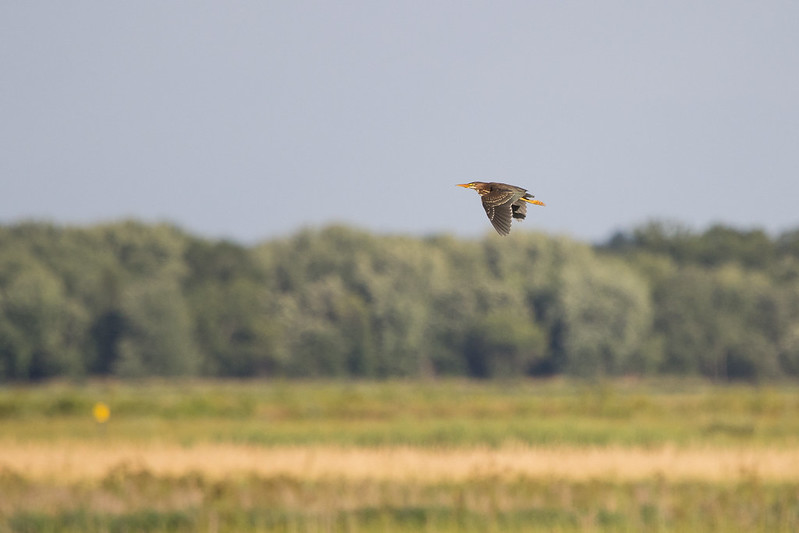 Green Heron by g.hetzel, on Flickr This is my favorite shot this year. It's been hard tracking down a Green Heron, let alone have it within shooting range, so I'm so happy with this.
|
|
|
|
Kawalimus posted:What do people think about stuff like using screech-owl tapes to scare out birds? It seems like more and more people are doing this. I find it kind of cheap and also discourteous when there are a bunch of other birders around. In the spring myself and a couple other guys were birding at a good warbler area and one of us thought we had a bay-breasted and I was getting a glimpse of a Cape May. Then someone right near us started doing a screech-owl tape and all the birds went bananas and we never got good looks. It was just annoying. But it seems like so many of the top birders do it. So I don't know. This is a good question, and the folks who already posted explained the ethics situation really well. Playback is illegal in some parks and wilderness areas, so that's also a good thing to be mindful of. I am a (very) amateur birder, and I get a thrill every time I get to see something thats new to me. Or if I see something that's rare in my area. Or if I get a decent picture. BeastOfExmoor, I'd love to hear pishing technique! I kinda go "pffffffbt" which gets me nowhere. Maybe the birds think I showed up to entertain them. Have a Virginia's Warbler butt from last spring. Saw a mystery warbler on Monday, fall is here!  El Paso County by Ghost Cactus, on Flickr Edit: Thanks for the thread, razz! I'm jealous of all you guys who are researching birds. My major professor wants me to work with a PhD student who will be doing landowner-related work with Atwater's Prairie Chicken and Lesser Prairie Chicken, but I have no idea how the logistics of that would work. Another option has something to do with the Golden Cheeked Warbler Recovery Credit System, which sounds pretty darned cool. I'm a total newbie to all of this! Ghost Cactus fucked around with this message at 15:58 on Aug 28, 2013 |
|
|
|
I don't think there's really a "wrong" way to pish out birds. If you make a noise and they come out, hey, it worked  I make a noise kind of like a cross between "psst" and "shhh". So it really does sound like "psssh, psssh, psssh". but with the shhh part kind of longer and drawn out. You could probably find a YouTube video or something. You can also make squeaky sounds, like a kiss. Pull air in through your lips and keep them really tight, that will get some birds to come out too. Ghost Cactus posted:My major professor wants me to work with a PhD student who will be doing landowner-related work with Atwater's Prairie Chicken and Lesser Prairie Chicken, but I have no idea how the logistics of that would work. Another option has something to do with the Golden Cheeked Warbler Recovery Credit System, which sounds pretty darned cool. I'm a total newbie to all of this! Are you in school right now? Prairie chicken work usually starts in the spring (Febuary or so) and trapping goes until early May, then various other things will happen throughout the summer, such as telemetry or capturing broods (newly hatched chicks). Then towards the end of fall and on into winter, it's basically just keeping up with telemetry and data entry. This is me assuming it's a capture study where the birds are collared with transmitters and/or have leg bands put on. This is how the many prairie-chicken studies my lab has done have always turned out. If you want to do bird related field work, there are always summer tech positions. I hire 2 people every summer. Summer jobs are fairly plentiful (mostly summer field work helping a Masters or PhD student) and may be be easy to get depending on the job and your bird ID ability, or just general ability to work outside. For example you really only need to know how to identify one bird when working with Prairie Chickens ya know. So you don't have to be a "birder" to get bird jobs.
|
|
|
|

|
| # ? Apr 24, 2024 16:06 |
|
razz posted:I don't think there's really a "wrong" way to pish out birds. If you make a noise and they come out, hey, it worked I was going to make a big effort post, but Razz pretty much nailed it. All the videos I could find on youtube are poor, but here's one minus a really long awkward explanation: http://www.youtube.com/watch?feature=player_detailpage&v=LI4EwnWavUw#t=80 There's not really any "right" way to do it. You're basically trying to mimic a sound that will make a bird curious so squeeks, whistles, etc. are all worth trying. Knockknees posted:How often are birders a big group of random people gathered in one spot, versus just being alone in a spot or a hike? I suppose it depends on the location and time of year, but I don't know much about the birding culture. It varies completely. There are many "hot spots" that see a lot of people, but it's all relative. The only time I know I'm going to run into another birder is either chasing a rarity or going to a very well known hot spot during the right time of year. This may just be my location, however. Hot spots can be very strange. Sure there are places like Central Park, or Cape May that are known by most people, but locally there are often spots without any distinction among the general populace that birders know very well. When I was in Colorado I ended up at the local hotspot for finding Rosy-Finches in the winter. It was a residential street in a ski town where a couple residents had bird feeders. BeastOfExmoor fucked around with this message at 20:41 on Aug 28, 2013 |
|
|



